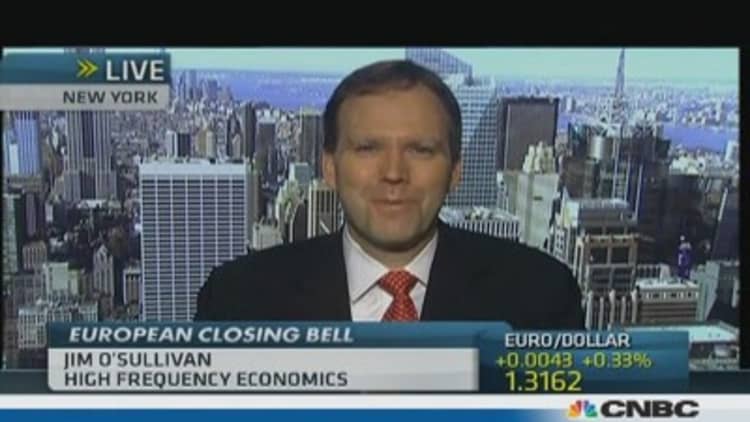Traders of short-term U.S. interest-rate futures on Friday pushed bets on the Federal Reserve's first rate hike a bit later into 2014 after a government report showed the U.S. economy added fewer jobs than expected in August.
Fed funds futures prices suggested traders are now betting that the Fed will first raise rates at its October 2014 meeting or later, after the U.S. Labor Department reported 169,000 jobs were added last month.
Economists had expected a rise of 180,000 jobs. The weak report raised questions over whether the Fed will begin to cut its bond-buying stimulus this month, as many economists expected.
(Read more: Jobs growth misses high hopes; unemployment rate drops to 7.3%)
Traders now see just a 46 percent chance of a rate hike in September 2014, down from 53 percent before the report, according to CME Group's Fed Watch, which generates probabilities based on the price of Fed funds futures traded at the Chicago Board of Trade.

"Even the Federal Reserve would conclude that the employment trend is moderating, and for that reason alone they probably will have second thoughts about tapering bond purchases this month," said Cary Leahey, a senior advisor at Decision Economics in New York.
Any delay in tapering bond purchases could mean the Fed ends up holding rates near zero for longer.
The market still sees a rate hike earlier than most Fed officials do: in June, all but a few Fed policymakers said they did not expect to raise rates until some time in 2015.
This week two Fed officials, the dovish head of the Chicago Fed, Charles Evans, and the centrist chief of the San Francisco Fed, John Williams, put the likely timing of a rate rise even later, saying they did not expect rates to rise until late 2015.
(Read more: Jobs data good enough for tapering, just 'taper light')
The futures contracts, tied to the Fed's policy rate target, rise in price when traders see a bigger chance of a later Fed rate hike.
—By Reuters.

